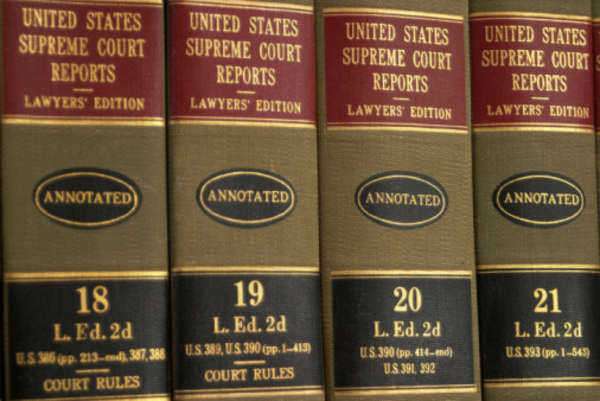
What are Law Books?
Law books are fundamental resources used by all individuals interested or associated with the intricacies of law.
Law books are the foundation, used to affirm various legal codes as well as interpretations. Through the observation of a particular
There are five forms or classifications of law books; each form is used by academics, legal professionals, or individuals interested in law, to observe and gain knowledge concerning a particular field of law.
The five classifications of law books are: Casebooks, Legal citation guides, Law dictionaries, Legal history books, and law books that document legal treatises.
Types of Law Books Explained:
1. Casebooks: A casebook is a type of law books used primarily by students in law schools. As oppose to laying out the legal doctrine in a particular field of law or study, a casebook contains excerpts from legal cases in which the law of that specific area was applied. As a result of this framework, the observation and the analyzing efforts are then up to the student to evaluate the language of the case in order to determine what legal rule was applied and how the court applied it.
Casebooks also contain excerpts from law review articles and legal treatises, as well as historical notes, editorial commentary, and various forms of related material to provide background for the cases. The majority of casebooks are authored by law professors and the teaching style attached to the resource is known as the casebook method. The casebook method aims to instill various legal techniques in law students to aid them in “thinking like a lawyer.”
2. Legal Citation Guides: Legal citation guides are formal law books that list all cases that establish a precedent for a particular legal matter. The majority of established legal citation guidelines are compiled by various law reviews and law journals. Typically legal citation guides are organized based on the underlying legal matter or jurisdictional boundaries.
3. Law Dictionaries: A law dictionary is a form of law book that is designed and organized to give information about terms used in the field of law. Law dictionaries list terms that are relevant in law and appropriately define them. Law dictionaries that cover an entire field of law are called a single-field dictionary, whereas a dictionary that covers a part of a field of law is referred to as a sub-field dictionary.
Law dictionaries that attempt to cover all the terms in the field of law are known as maximizing dictionaries; those dictionaries that cover only a limited number of terms (the more common law books) are referred to as minimizing dictionaries.
4. Legal History Books: Legal history books are forms of law books that describe and elucidate on particular areas of law. Legal history books can be opinion-based; however, the majority of such resources are deeply-rooted in history.
5. Legal Treatises: These forms of law books are scholarly publications which describe all of the law relating to a particular area, such as criminal law or estate law. Legal treatises act as secondary authorities; they primarily serve as a useful starting point for legal research, particularly when the researcher lacks a general familiarity with a specific area of law. Lawyers or legal professionals commonly use legal treatises in order to review the law and update their knowledge concerning pertinent primary authority, namely statutes, case law and various administrative regulations.



























